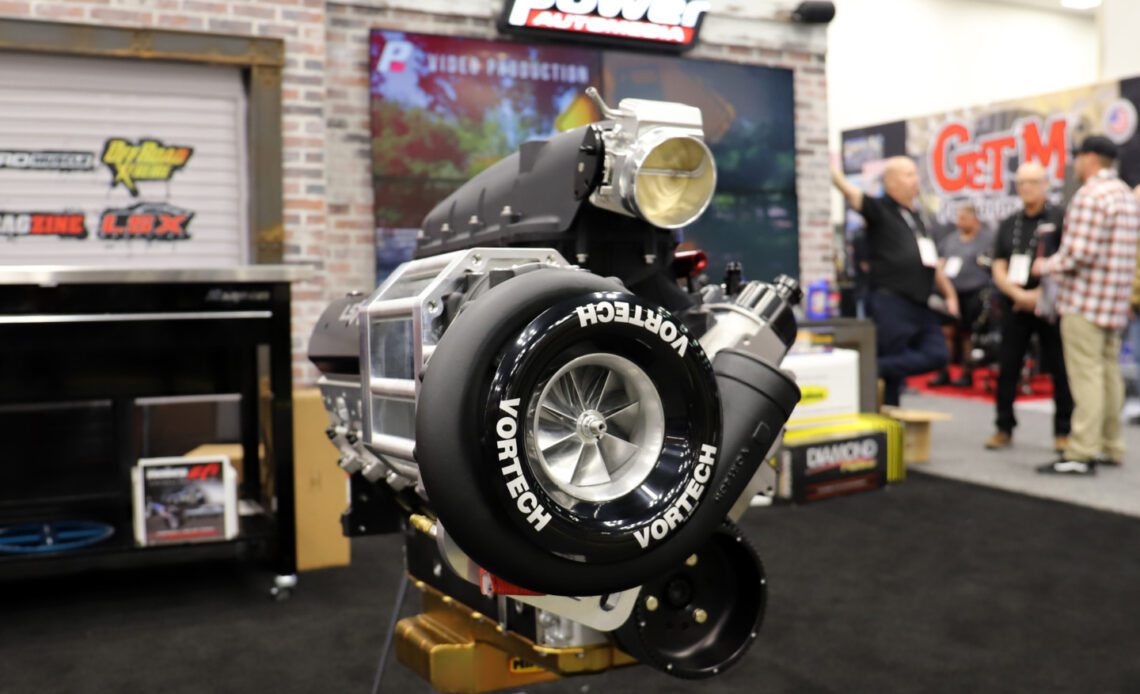In case you missed it, our sister publication, EngineLabs, held an engine giveaway in conjunction with the PRI Show last winter in Indianapolis. During the show, Late Model Engines (LME) of Texas built one of its signature LS7-based 427 powerplants filled with all the latest high-performance parts. To add to the fun, Vortech Superchargers offered up one of its LS bracket race kits with a V-30 105A centrifugal supercharger. Vortech also offered the winner the option of selecting a more street-friendly kit using a C5/C6 Corvette FEAD hardware to mount one of its V-7 YSi-B supercharger units.
LME assembled this engine on the floor at the PRI show in December 2021, and mounted a sample Vortech blower to give the PRI crowd a look at the quality of their handiwork. When the name was drawn, Celeste Haskins was the lucky winner. Since she plans to put the LS beast into a real street-legal sleeper, a 1991 Buick Roadmaster Estate Wagon, complete with the faux wood paneling on the sides, she chose the V-7 YSi-B unit.
In this article, we will be discussing Vortech Superchargers V-7 YSi-B with a billet impeller that Celeste chose for her build. The V-30 series is a great blower for drag racing applications, but Celeste wanted something that was more streetable. So, Vortech recommended the V-7 YSi-B to allow her to actually drive her grocery-getter to the grocery store.
Basic Blower 101
Superchargers work by pumping additional air into the engine. Feeding compressed air into the engine allows for more fuel to be burned, resulting in more power. It’s a pretty simple concept, but there are several ways that air can be pumped into an engine, and each method has its benefits and disadvantages.
Superchargers that are used in car engines come in two basic flavors: positive displacement blowers, such as Roots-type and screw-type, and centrifugal superchargers that use an impeller driven by the crankshaft like those Vortech makes.
Centrifugal Superchargers
Centrifugal superchargers use a spinning impeller that draws the air in through the center of the blades and flings it outward to the edge of the impeller through centrifugal force. Since the outer edge is moving much faster than the center, the air is accelerated beyond the speed of sound, which creates a low-pressure area, drawing even more air into the center. The faster the impeller spins, the greater the airflow. The overall process is highly efficient and produces a power increase in the middle and top of the…
Click Here to Read the Full Original Article at DragzineDragzine…


